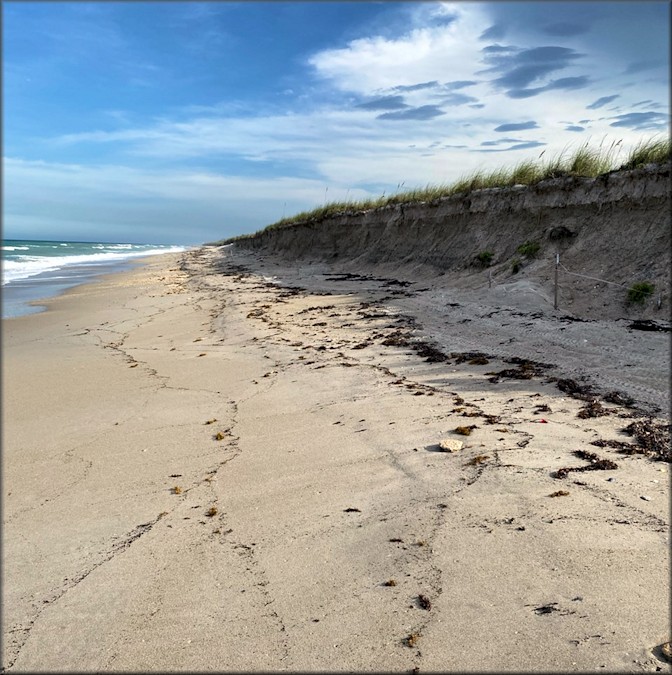| Euglandina rosea (Férussac, 1821) Rosy Wolfsnail At The Beach |
|
Formerly when searching for terrestrial species, about the last place that came to mind to search was the open Atlantic Beaches of Florida's East Coast and adjacent dunes. This type of habitat is very dry, gets unbearably hot and thus very few terrestrial species can survive there. A limited number of snails such as members of genera Succinea and Cerion can survive and do thrive in this habitat at certain Florida locations. (See: Cerion tridentatum costellatum Pilsbry, 1948 In Situ). During a marine shelling trip during January, 2020 several empty faded Euglandina shells were found in the dunes adjacent to the beach on the very southern end of Little Talbot Island State Park in eastern Duval County, in northeast Florida. Subsequent trips to the area beginning in March, 2020 and continuing through August, 2021 revealed the presence of many more (dozens) of empty shells in the dunes on the southern two thirds of the park. Live specimens proved elusive but ultimately three live juveniles were found but no adults (see: Euglandina rosea (Férussac, 1821) Short Rotund Population for further details). Since September, 2020 Richard Matteson has been surveying the marine mollusks on the beach at South Hutchinson Island on the southeastern coast of Florida just south of Fort Pierce, St. Lucie County (see: South Hutchison Island Marine Mollusk Checklist). In addition to the nearly 200 recent marine species thus far identified, Mr. Matteson has also found a number of fossil marine species and some 60 empty Euglandina rosea shells. Some of these finds are pictured in the bottom image. It's not known whether Euglandina rosea are currently living in the dunes adjacent to the Atlantic beach or whether the shells discovered by Richard are fossils - or possibly even a combination of fossil and recent origin. Roger Portell, Director of Invertebrate Paleontology and Micropaleontology Collections, Florida Museum of Natural History reports that he has found Euglandina rosea in Florida fossil deposits as old as early Miocene and that surface fossil deposits in the area of Richard's finds are probably Pleistocene but they could also be from late Pleistocene or even Holocene. Hopefully further survey activity by Richard will reveal whether South Hutchison Island, like Little Talbot Island in Northeast Florida, has a living Euglandina population. |
 |
| Beach at South Hutchison Island where the shells were found |
 |
| Euglandina rosea found on the beach at South Hutchison Island |